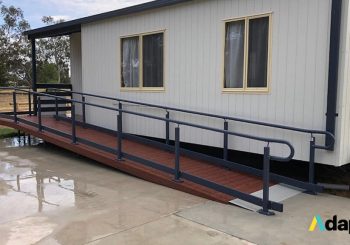If you’re looking to make your home, office, or establishment more accessible and wheelchair-friendly, then your best option is to purchase and install a ramp. This feature, which is usually used as an alternative to stairs, provides people with disabilities and mobility issues with an easier and safer way to reach their destination.
There are certain factors you have to consider in order to get the best ramp that fits your needs and preferences. It’s also important to avoid committing mistakes that other people often make when it comes to buying a wheelchair ramp.
Not Doing Your Research
Before ordering a ramp, the first thing you have to do is research the type of ramp that you need. Ramps come in various shapes and designs and are usually made from different materials. Also, some have modular structures, while others are permanent additions to a property.
Through proper research, you’ll be able to narrow down your choices and identify the type of ramp that you need. Failure to research this matter might cause you to end up with a ramp that doesn’t suit your needs, such as buying one that’s made from materials that are not suitable for the weather conditions in your location.
Buying The Cheapest Option
Another common mistake that people make is going for the cheapest option by buying a low-quality ramp. Although going down this route can help you save money from your purchase, you might end up with more expenses in the future once the cheap ramp gets damaged. Also, keep in mind that ramps made from low-quality materials are prone to causing accidents.
In addition, unlike their cheap counterparts, high-end ramps are usually offered by suppliers with warranties, free installations, and other after-sales services. These help you get the best value out of your wheelchair ramp.
Getting A Used Ramp
Similar to the mistake mentioned above, many people tend to purchase a ramp that’s already used to save money. However, even though you’ve inspected the ramp and you trust the seller, there’s no way to know how it was actually used by the previous owners. As a result, you might end up with a nice-looking ramp that has already undergone several major repairs.
Most of the time, sellers hide signs of repairs by covering them with a fresh layer of paint. Even if the secondhand ramp appears to be in good condition, it might have underlying structural issues, which could lead to accidents in the future.
Ordering From An Unreliable Supplier
Finding a trustworthy and reliable ramp seller should also be part of your research process. Ideally, you should look for a supplier that has an impressive track record and excellent customer service. This allows you to gauge how the company will be able to accommodate your needs and respond to your concerns regarding your purchase.
You can also get an idea about the quality of the ramp a seller provides by checking out the reviews made by previous customers. These reviews can be accessed through the seller’s website or social media accounts. Asking for recommendations from friends, family members, or other people who have high-quality ramps is also a great way to find a reliable supplier.
Not Measuring Properly
When ordering a ramp, many people often forget to take accurate measurements of the area where they will put it in. As a result, they end up with a ramp that’s either too big or too small for the allotted space.
Aside from not taking accurate measurements, people also tend to disregard objects in their property that might obstruct the ramp. Before finalizing your order, inform the supplier about your measurements and the layout of your space. These factors can help the supplier pick a ramp that’s suitable for your needs.
Ignoring DDA and AS Regulations
When it comes to buying and installing a ramp, one of the most important factors to consider is if its design complies with the regulations set by the Disability Discrimination Act (DDA) and the Australian Standards (AS).
According to the regulations of the DDA and AS, wheelchair ramps should follow certain specifications and design guidelines. They should also have various safety features, such as slip-resistant surfaces and handrails. Failure to provide DDA and AS-compliant ramps in public places could lead to legal repercussions.


